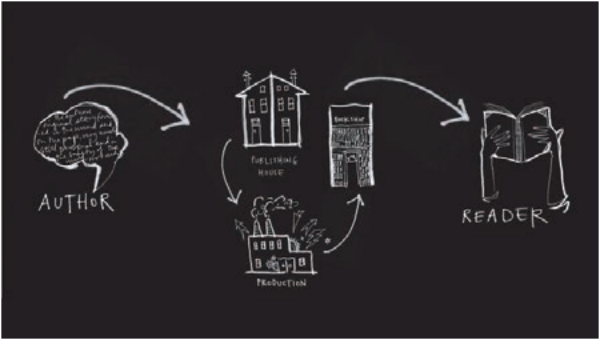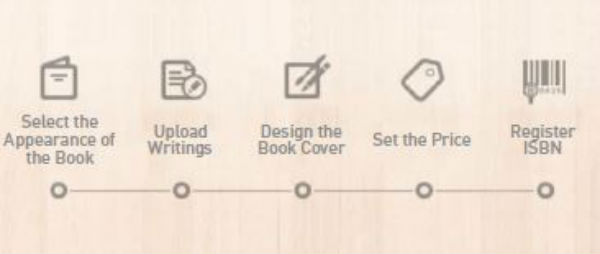Recently, as the domestically famous enterprise Kakao announced that they will adopt a Print on demand (POD) system through ‘Brunch’, which is a content platform that Kakao launched in 2015 with the idea of making a space where writing becomes an art, the POD system has received a great amount of attention. In traditional publishing markets, big enterprises have absolute power on publishing books and writers’ works. The POD system, however, has led to a new era in which anyone with content can publish their own unique books and sell them to others by using digital technologies. Therefore, the Sungkyun Times (SKT) now introduces the POD system more specifically to Kingos, and discusses its advantages and disadvantages.
What is POD?
Definition of POD
POD is an abbreviation of Publish on demand. It can also be referred to in various different ways like: Print on demand, Book on demand, and On demand publishing. Literally, the POD system means a way of producing books or other documents in which copies are printed only after they have been ordered, according to the Cambridge Dictionary. Two key points of the POD system are ‘Digital’ and ‘Demand’. For Digital, the POD system provides the service of printing books that the customers want by using digital printing and a computer. Moreover, the POD system supplements the disadvantage of original paper books by measuring the exact customer’s demand on the amount and overall design of the books. The POD system is a new publishing style that differs from traditional publishing methods. In traditional publishing methods, big publishing companies decide the quantity of the books that are to be printed. Usually, the publisher fails to predict the exact demand of the books. Therefore, there are lots of leftover books that have to be stored, and storing leftover books causes additional cost. On the other hand, the POD system collects various data on the book, and stores them in digital form. Whenever customers request a specific book, the POD system prints the book after the input of a customers’ request is completed. As a result, the POD system skips the storing steps, lowering the price of the book.

POD can be classified into two categories, demand on the narrow meaning and the wide meaning of the POD system. To start with, the narrow meaning of the POD system usually includes books to read. The POD system is effective in publishing books that target few readers. For example, academic books that have only limited demand can easily be published through the POD system. In the wide meaning of a POD system, it includes poetry books, diaries and photo albums of individuals. In addition, calendars can even be printed with the POD system. According to Caslon & Company, the digital printing market will grow by 24% per year up to 2021 and among this rapid growth, the POD system will take up to 20% of the growth per year.
Technologies of POD
There are various technologies that have led to the advent of the POD system. To start with, Optical character recognition (OCR) has played a crucial role in developing the POD system. According to the Cambridge Dictionary, OCR is a process of an electronic device recognizing the printed or written letters or numbers. OCR uses a device that collects information of the letters, numbers, and symbols in order to identify the exact figure and converts it into encoded electrical signals that are appropriate for the computer. With these encoded electrical signals, the device compares the letters they read from the document with the letters that already exist in the computer so that it can finally find out the exact figure. Although OCR has a disadvantage in that there are some errors in recognizing the exact figure, OCR has still led many paper books to be easily stored in digital form that can be stored on computer. It is not only OCR but other technologies too, such as the development of the digital printer which has also led to the improved quality of books published through the POD system.

Advantages and Problems of POD
Advantages of POD
The traditional publishing process is ‘print and sell’ while POD is ‘sell and print’. This change in the publishing process has brought various advantages to both publishers and writers.
•Publisher’s Perspective
The POD system has brought various advantages to the publishers. Firstly, the POD system has enabled publishers to avoid risks that they have faced during traditional publishing processes. Usually, publishers additionally print more than 50% of the amount of books they have predicted, because there is no way of measuring the exact numbers of books that readers demand in the real world. When the books are not popular among readers, publishers have to shoulder the financial burden in handling the leftover books. Through the POD system, however, publishers can be free from these financial problems by printing the exact number of books that the readers demand. Publishers do not need any storage to store leftover books. They only need digital files on the computer to store the books in digital form. By using the POD system, the publisher can predict how many books will be sold more accurately than before, also observing the popularity of the book and the reader’s reaction. This will increase the possibility of the successful mass printing of the books. The POD system is perfect for minimizing the financial risks of the publishers. Because of these reasons, in Western countries, the POD system is frequently used to minimize financial uncertainty when publishing new books. Furthermore, printing books that are out of print can also be printed easily with the POD system even though there is only one demand.
•Writer’s Perspective
Writers can now publish the books that they really want to write. In the traditional publishing process, publishers only accepted and published books that can be sold to many people due to economic benefit and books that targeted only a small number of readers were hard to get published. Through the POD system, however, the strict conditions for a book to be accepted by publishers have changed, and writers now write books that they have an interest in more easily and actively. Moreover, books that target only one individual have also appeared. In addition, because the file is stored in digital form, writers can directly update the current information as well as correct the errors right away. Furthermore, various products that are printed through POD in a wide range, like individual’s calendars, photo albums, and diaries can be used to earn economic benefit. For instance, the mobile application company Starpix provides a POD service to customers. Fans of entertainers make unique products such as their favorite singer’s photo albums and their favorite actress’s photo calendars with the POD system and sell them to other fans. The fan who published the products can own the copyright of the products and gain the economic benefit.
Problems of POD
Along with these advantages, however, there are also some problems. To start with, the book published through the POD system has relatively low quality compared to that of ordinary traditional publishing process. Also, there are still restrictions in the paper quality and the size. In addition, the publishers’ role of filtering out books with low quality may not function effectively.
•POD Problems in Korea
According to Print Trend, Korea is at an amateur level of the development and use of the POD system for three reasons. Firstly, the digitalization of the books is not perfectly done. There are no network systems for the wide range of book searches which will ease the process of the digitalization of the books. Secondly, there is a lack of willingness among Korean publishers. Even though there are various advantages, complicated issues related to copyright exist. The POD system stores books in digital form and there is no acceptance on whether people can turn the file into digital form and store it when there is no specific writer at present. Finally, the government is showing a passive attitude. Without the government’s support, the marketing and technological development of POD will be difficult.
Applications for POD
Even though there are some problems with the POD system, it is effective in solving various problems that the traditional publishing process has had. Therefore, the usage of the POD system is increasing rapidly in many other countries. For instance, Fifty Shades of Grey was first published through the POD system and as it grew in popularity, the publisher started to publish the book in larger quantities.

The POD system in Korea
The POD system in Korea is still at an amateur stage, but it is developing rapidly. The most famous case of the POD system in Korea is the adoption of the POD system by Kakao. Kakao started the POD system through Bookk. Bookk publishes books without a minimum limit on the number of books to be sold or strict publishing restrictions. Bookk publishes books whenever the customer’s requests exist. Moreover, writers can publish their books for free. This is made to give opportunities to the many unique writers who would not have been able to have their books published due to practical difficulties. To publish books through Bookk, the writer only has to go through several steps. To start with, the writer has to log in on Brunch. On Brunch the person has to write more than 30 pieces of writing to be accepted as a Bookk writer. Then, the person has to move on to Bookk and press the book publishing button. After deciding on one of the various designs of the book and uploading the writing, the person can publish his or her own book. Bookk not only publishes books for free, but it also provides various portfolios of design and error correcting services. Therefore, anyone who wants to become a published writer can easily do so through Bookk.

The way a reader buys a POD book is similar with that of ordinary books. Some people might buy books that became famous through Social Networking Services (SNSs) such as blogs, Twitter, or Facebook when the writer has been writing stories through a SNS. Mostly, people buy books after reading the outline of the book as well as the profile of the writers. Bookk provides detailed information on the site regarding writers. Moreover, it also provides various charts and rankings of the books which help the readers choose the books more easily. When the readers order the book, it usually takes about two days for the book to be printed through the POD system, therefore enabling the readers to receive their books in three to four days.
The POD system might seem unfamiliar, but it is surely an important new paradigm for publishing books. Thanks to the development of the POD system, people with great ideas can now share their stories with the world without restrictions unlike in the past. People who are interested in minor or unpopular topics can also easily find and write books that fit their sense. Everybody can write about their experiences and publish them in order to share with others, even though they are not famous writers. The POD system has opened a new era for a more active and free exchange of ideas between individuals who may never have had their voices heard.
